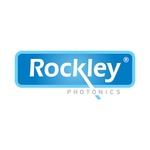– Groundbreaking technology supports infrared and hyperspectral image detection and sensing devices to view images more clearly, at longer distances, and in low-light situations.
– In collaboration with UC Santa Barbara, experiment shows first-time demonstration of a compact (micron-sized), monolithic silicon photonic electro-absorption-modulator maintaining its performance down to 4 Kelvin (-269.15 Celsius), enabling transmission of signals at cryogenically cooled temperatures with a compact, photonic integrated circuit.
– Rockley’s technology platform allows detection and sensing devices to be smaller in size and weight, and lower in power consumption.
OXFORD, England & PASADENA, Calif.–(BUSINESS WIRE)–Rockley Photonics Holdings Limited (NYSE: RKLY) (“Rockley”), a global medical technology company focused on delivering leading edge silicon photonics-based biosensing solutions by targeting a portfolio of biomarkers, today announced a groundbreaking 4-Kelvin performance demonstration with its monolithic silicon photonics electro-absorption modulator technology that is key to the development of next-generation cryogenic interconnect technology. This advancement is intended to enable ultra-sensitive image detection and sensing devices to view and capture images more clearly and at longer distances, as well as in low-light situations and enables these devices to have a significantly reduced size and weight.
UC Santa Barbara’s project utilizes Rockley’s powerful technology and will potentially advance detection and sensing capabilities in devices for a range of applications that require ultra-sensitive sensors. Possible applications include infrared and hyperspectral imagers and cameras that are used for night and day surveillance, aerial search and rescue, environmental remote sensing and chemical detection, ultra-sensitive neutrino detectors in particle accelerators, as well as interconnects for quantum computers.
The cryogenic modulation experiment showed that the strong modulation of Rockley’s silicon photonics electro-absorption modulator at room temperature is maintained when it is cooled down to 4 Kelvin (-269.15 Celsius, -452.47 Fahrenheit) with almost no performance degradation. At these low temperatures, signal noise in camera detector arrays is reduced dramatically, resulting in increased sensitivity, and enabling devices or cameras to view clearer images and the ability to see longer distances and in low light. The ability of Rockley’s platform to maintain good performance and capture data at this very low temperature means that Rockley’s photonic integrated circuit technology can be used to make these ultra-sensitive detection devices smaller in size and weight, have a lower cost, and operate with lower power consumption.
Rockley has collaborated with UC Santa Barbara to make this demonstration. UC Santa Barbara brings their renown expertise in photonics research to the collaboration by performing the experiment that showed that high-speed signals could be modulated and extracted out of a cryostat chamber at temperatures from room temperature down to 4 Kelvin with minimal degradation of performance. The results will be presented at IEEE’s Photonics Conference on November 16 and subsequently published in the conference proceedings.
“At UC Santa Barbara, our research is focused on closely integrating electronics and photonics to push the boundaries of speed and efficiency for the photonic links and optical networks that data centers, computers, and sensors depend upon to share and move data,” said Clint Schow, professor and Vice Chair of Electrical and Computer Engineering at UC Santa Barbara. “We are excited to collaborate with Rockley Photonics because our work in transmitting signals via light at very low cryogenically cooled temperatures will enable new technology that significantly increases sensitivity in sensors, resulting in the ability for cameras and devices to capture images with increased clarity.”
“Rockley has been innovating in photonics technology for many years and I am not surprised that our pioneering work has generated interest from academic research and other industries beyond health monitoring and wearables,” said Dr. Andrew Rickman, chairman and chief executive officer of Rockley. “I envision our technology will have broader and important applications that will benefit organizations and individuals around the world.”
“The ability of Rockley’s silicon photonics platform to capture data at 4 Kelvin with good performance will lead to technological advancements in image detection and sensors, including hyperspectral imagers and cameras that are used by the department of defense, defense and aerospace industry, NASA, and environmental agencies,” said Aaron Zilkie, chief technology officer of Photonics at Rockley. “Our collaborative work with UC Santa Barbara has been key to show us how this technology has the potential to take image detection to the next level and dramatically improve these devices.”
More information about Rockley’s digital health monitoring solution is available here: https://rockleyphotonics.com/healthcare-sensing/.
About Rockley Photonics
Formed in 2013, Rockley is a global medical technology company focused on delivering leading edge silicon photonics-based biosensing solutions that target a portfolio of biomarkers. Rockley’s ground-breaking end-to-end biosensing platform unlocks unique spectra-based biomarkers enabling insights into personal health and well-being. With next-generation biosensing platforms specifically designed for mobile health monitoring, Rockley is laying the foundation for a new generation of biomedical applications across multiple industries.
To learn more about Rockley, visit rockleyphotonics.com.
Cautionary Note Regarding Forward-Looking Statements
Statements in this press release that are not historical facts constitute “forward-looking statements” for purposes of the safe harbor provisions of the Private Securities Litigation Reform Act of 1995. These forward-looking statements include statements regarding Rockley’s future expectations, beliefs, plans, objectives, and assumptions regarding future events or performance. The words “accelerate,” “advance,” “anticipate,” “believe,” “can,” “capability,” “continue,” “could,” “develop,” “enable,” “enhance”, “estimate,” “eventual,” “expand, “expect,” “focus,” “forward,” “future,” “goal,” “ground-breaking” “intend,” “may,” “might,” “opportunity,” “outlook,” “plan,” “possible,” “position,” “potential,” “predict,” “project,” “revolutionize,” “seem,” “should,” “trend,” “vision,” “will,” “would” or other terms that predict or indicate future events, trends, or expectations, and similar expressions or the negative of such expressions may identify forward-looking statements, but the absence of these words or terms does not mean that a statement is not forward-looking. Forward-looking statements in this press release include, but are not limited to, statements regarding the following: (a) possible applications for our technology and the extent to which we may pursue potential opportunities; (b) the extent to which our technology will lead to smaller devices with lower power consumption at a lower cost; and (c) the extent of any additional technology advances based on our platform.
Forward-looking statements are subject to several risks, assumptions, and uncertainties (many of which are beyond Rockley’s control) that may cause actual results or performance to differ materially from those expressed or implied by these forward-looking statements. These risks, assumptions, and uncertainties include, but are not limited to, the factors described under the heading “Risk Factors” in our Annual Report on Form 10-K for the year ended December 31, 2021, and in other documents we file with the Securities and Exchange Commission. If any of these risks or uncertainties materialize, or should any of these assumptions prove incorrect, actual results may differ materially from those discussed in or implied by these forward-looking statements. There can be no assurance that future developments affecting Rockley will be those that have been anticipated. Given these risks and uncertainties, you should not place undue reliance on these forward-looking statements. These forward-looking statements speak only as of the date hereof and Rockley does not intend to update or revise any forward-looking statements, whether because of new information, future events, or otherwise, except as required by law.
Contacts
Media
Debra Raine
Rainemakers
Telephone: +1 415-349-7432
Email: rockleyphotonics@rainemakers.com
Investors
Gwyn Lauber
Rockley Photonics
Telephone: +1 626-995-0001



